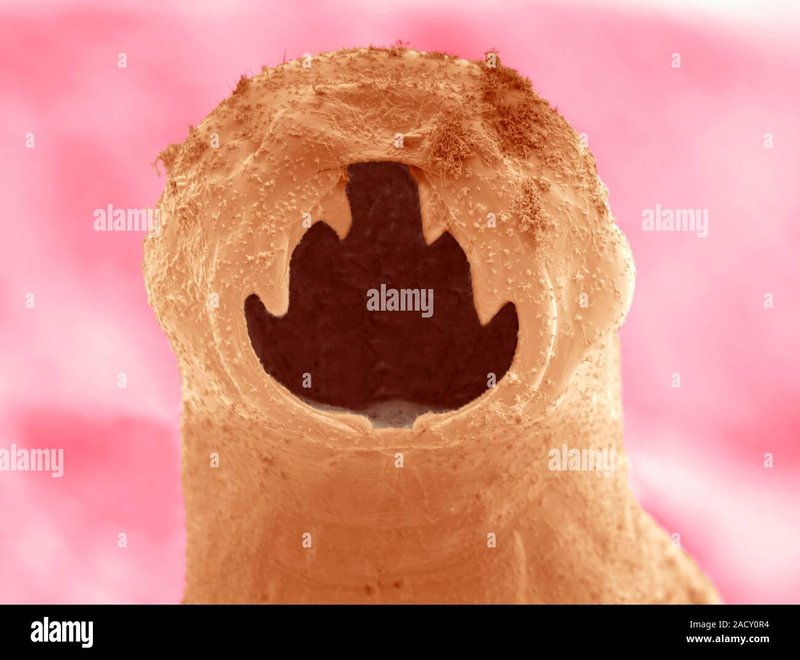
Hookworms, while often associated with health issues in humans and animals, play an interesting role in environmental research. They thrive in specific conditions and their presence—or absence—can signal changes in soil quality, moisture, and even climate. Let me explain how these seemingly small organisms can provide valuable information about our environment.
What Are Hookworms?
To start, let’s cover the basics. Hookworms are parasitic worms that belong to the *Ancylostoma* and *Necator* genera. They latch onto the intestines of their hosts, often causing health problems. But that’s not all they do. In the wild, they inhabit warm, moist environments and are found mainly in tropical and subtropical regions. They have a fascinating life cycle, needing specific environmental conditions to thrive.
When hookworms reproduce, their larvae can survive in the soil for several weeks. This is where things get interesting! Their presence in the soil can indicate a balance of nutrients and moisture in ecosystems. If you spot hookworms in a certain area, it might mean the soil is rich and healthy, making it an ideal environment for various plants and animals.
Hookworms as Bioindicators
So, what exactly is a bioindicator? Think of bioindicators as nature’s report cards. They are organisms used to assess the health of an environment. Hookworms can serve this purpose due to their sensitivity to environmental changes. When conditions shift—like changes in soil structure or pollution levels—hookworm populations can fluctuate dramatically.
For example, if nutrient levels in the soil drop or if the area becomes heavily polluted, the hookworms may disappear. This signals that the environment isn’t thriving. On the other hand, a thriving hookworm population might indicate a healthy ecosystem. You might wonder how scientists collect this information. It’s pretty straightforward! They often take soil samples from different areas and analyze them for hookworm larvae presence.
Why Monitor Hookworm Populations?
Monitoring hookworm populations provides insights into broader environmental changes. Here’s the thing: when we track these worms, we’re also tracking many other factors that influence ecosystem health. For instance, healthy hookworm populations can indicate balanced soil pH, adequate moisture levels, and rich organic matter.
On the flip side, a decline in their numbers can hint at problems like soil erosion or increased toxins. And who benefits from this information? Farmers, conservationists, and scientists alike. By understanding these tiny organisms, we can better manage land, improve agricultural practices, and conserve natural habitats.
Hookworms in Climate Change Research
Climate change is a huge topic these days, and hookworms even have a role to play here. As the climate warms, the habitats suitable for hookworms might shift. This can lead to changes in their populations, which can be an early indicator of how ecosystems are adjusting to climate shifts.
Let’s say there’s a rise in temperatures and a change in rainfall patterns. Hookworms might move to new areas, or their life cycles may be affected. By studying these patterns, researchers can gain valuable insights into how climate change is impacting various ecosystems. It’s like having a front-row seat to witness how our planet is adapting—or struggling.
How Researchers Study Hookworms
To really understand how hookworms can help in environmental monitoring, researchers have to follow some steps. Generally, they start by collecting samples from different soil types.
- Step 1: Identify a study area with varying conditions.
- Step 2: Collect soil samples using a standardized method to ensure accuracy.
- Step 3: Analyze the samples for the presence of hookworm larvae and other organisms.
- Step 4: Compare data over time to identify trends and changes in populations.
By employing these methods, scientists can build a picture of the environmental health of an area. And honestly, it’s quite impressive how much information can be derived from these small creatures.
Alternatives to Hookworms for Bioindication
While hookworms provide valuable insights, they’re not the only players in the game. There are other organisms used for environmental monitoring. For instance, some researchers turn to earthworms, which can indicate soil health and fertility. Similarly, the presence of certain plants can also signal environmental conditions.
Comparing these options can help scientists choose the best organisms for their specific studies. Hookworms excel in certain conditions, while other organisms might be better suited for different environments. Each choice has its pros and cons, depending on what the researchers want to uncover.
Challenges of Using Hookworms for Monitoring
While using hookworms for environmental monitoring sounds great, there are some challenges. For one, their populations can be impacted by factors like overgrazing or land development. This can complicate studies and make it harder to draw conclusions.
Moreover, since hookworms are parasites, there’s always a concern about their effects on human and animal health. Researchers need to be careful when managing their populations, ensuring that they don’t become a public health issue while still benefiting from their monitoring abilities.
In conclusion, hookworms might be small, but they hold significant potential for environmental monitoring and bioindication. By understanding their populations and how they react to changes, researchers can gain insights into ecosystem health and even climate change. It’s a fascinating field that highlights the interconnectedness of life, where even the tiniest organisms can help us grasp the bigger picture.
So, the next time you hear about hookworms, remember that they aren’t just parasites—they might just be some of nature’s best analysts, helping us keep a finger on the pulse of our planet.

